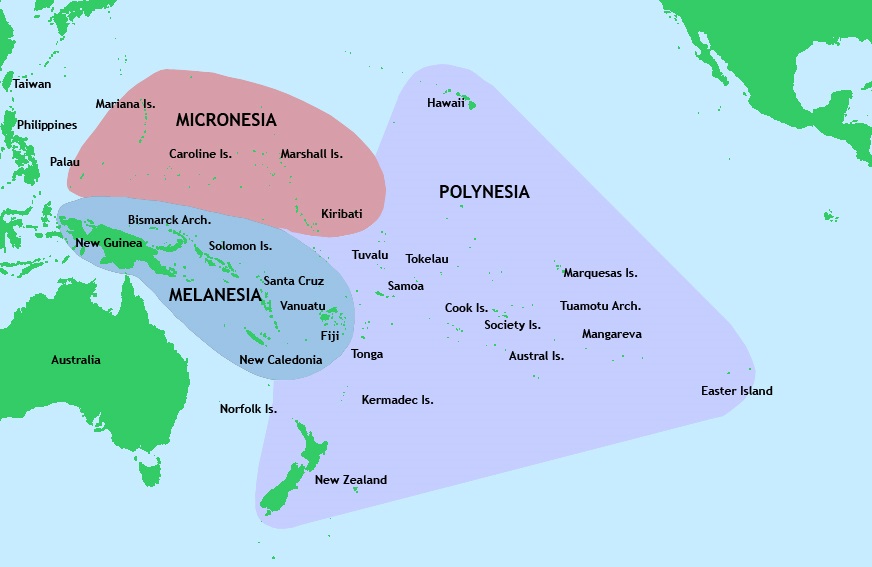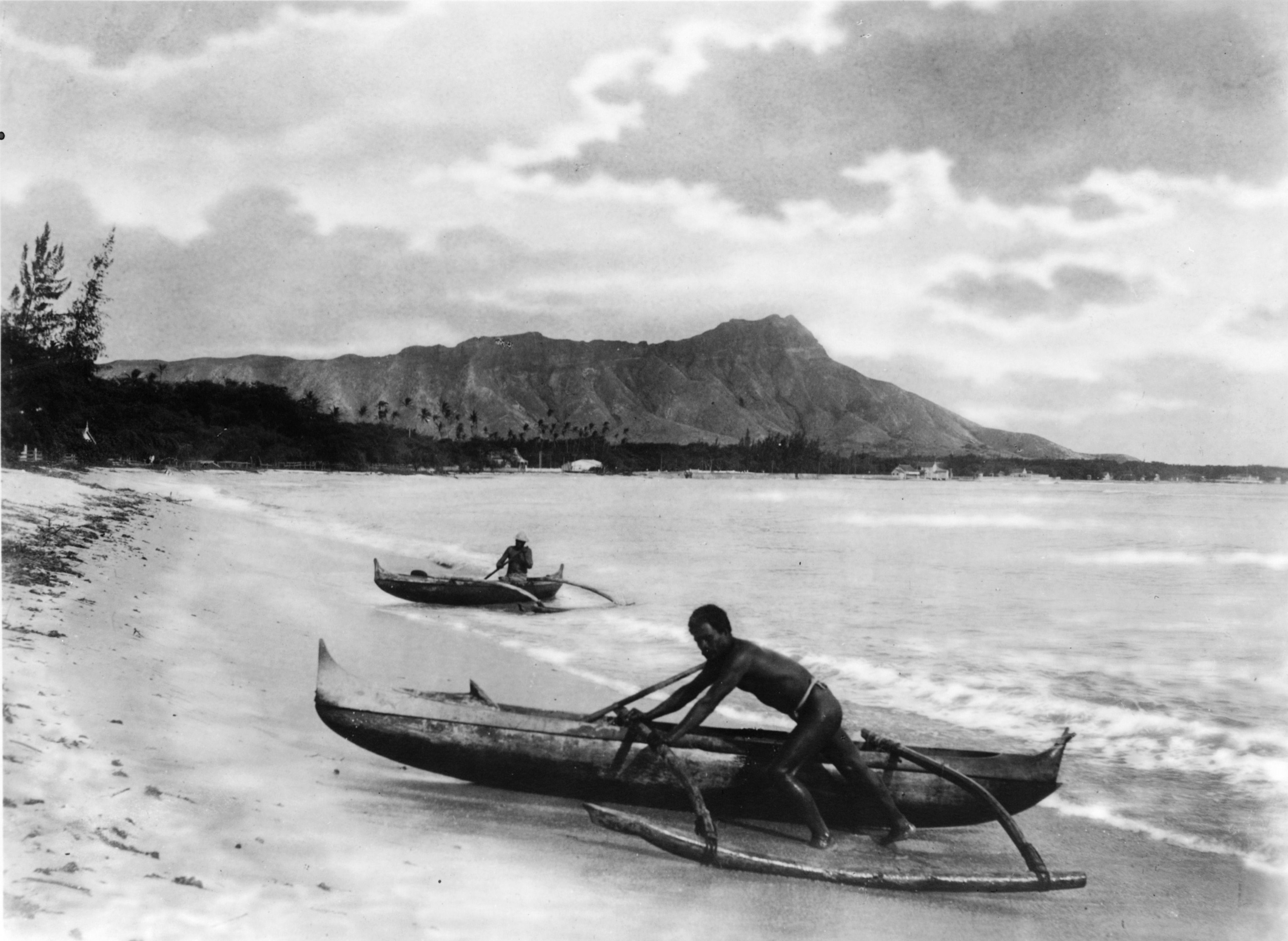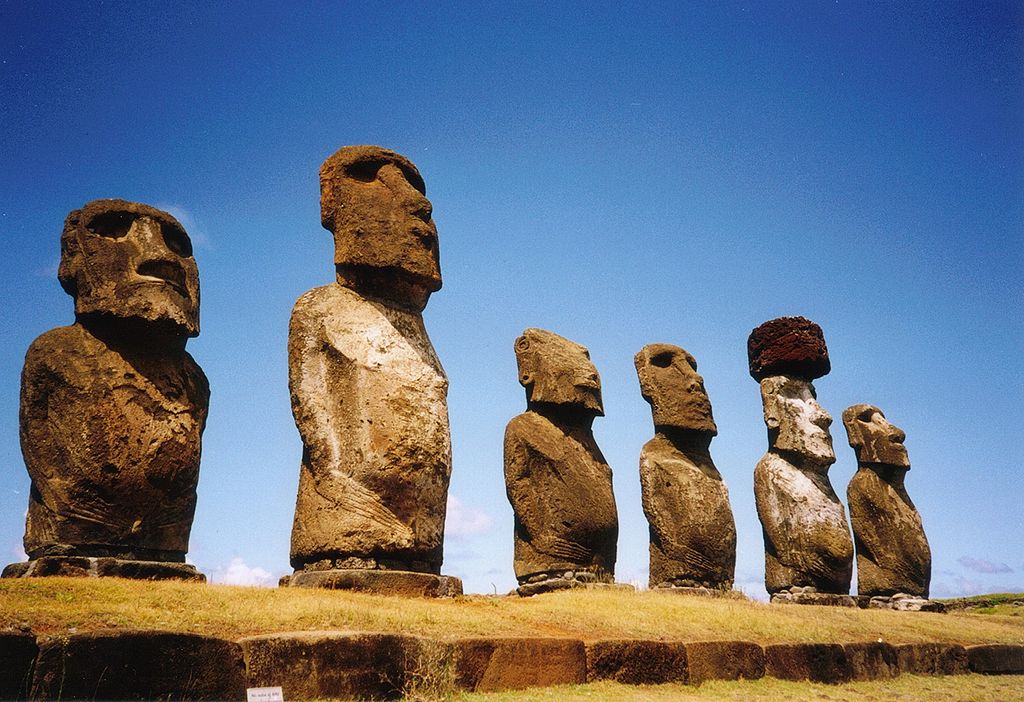Photo credit: Wikimedia user Makemake
The sweet potato wasn’t lying; DNA evidence confirms it. The Polynesian people of Easter Island voyaged to South America long before the time of Christopher Columbus.
Polynesia is a vast stretch of ocean dotted with small islands. The origin and historical spread of the Polynesian people was a topic of anthropological debate over the last century. Though Polynesian culture bears similarity to that of coastal Asia and Melanesia, the ancient presence of the South American sweet potato in Polynesia argued strongly for some contact between Polynesians and Native Americans. On this basis, as well as some liberal interpretations of Incan legends, Thor Heyerdahl claimed in the 1940’s and 50’s that Polynesians descended from the Inca. Thor even sailed an Incan-style boat from South America to Easter Island, an incredibly remote speck of land between Chile and the rest of Polynesia famous for the enormous stone heads (moai) dotting the island.

The South Pacific
Thor’s hypothesis was blind to the linguistic and cultural similarities of Polynesians and the people of coastal Asia. Despite his prowess with sales and sails (I’m so sorry), his ideas fell out of favor very quickly with anthropologists. But that did not settle the origins of Polynesians.
Analysis of the Polynesian language suggested that ancient Polynesians most likely originated in Taiwan before its colonization by Han Chinese. Genetic evidence confirms the Taiwanese origins of Polynesians, with the addition of an extended stop in Melanesia, where they interbred with Melanesians before voyaging out farther east to remote Pacific islands. Based on language and archaeological evidence like pottery and naval technology, the Rapa Nui (the indigenous people of Easter Island) are clearly Polynesian. But if the story was a Polynesian spread from Taiwan eastward, then what was up with that sweet potato*?
A new study confirms that the Rapa Nui of Easter Island did in fact visit South America. The evidence comes from the DNA of Rapa Nui, which reveal partial Native American ancestry. Long stretches of DNA get interleaved as smaller fragments each generation at a roughly predictable rate, as the DNA from mothers and fathers recombine, so scientists can determine how long ago mating between two groups occurred. The way Native American DNA is distributed across the genome of Rapa Nui peoples suggest that their contact most likely happened around 1300-1500 CE, adding one more pre-Columbian visit to the Americas by peoples of the Old World.

An outrigger canoe in Hawaii
Since its introduction in the late 80’s, anthropological DNA evidence has settled mysteries unanswerable by archaeological evidence, upended previous dogma, and confirmed seemingly fantastical hypotheses like Polynesians trading with Inca. In the case of the Polynesians, the archaeological and linguistic evidence had already converged on the idea that the Polynesians were of Taiwanese origin, that the Rapa Nui were Polynesian, and that they had at some point visited South America. Now DNA evidence has confirmed all three points, and added nuance; without molecular data, we couldn’t have known about the Taiwanese layover in Melanesia or the timing of contact with Native Americans.
Our understanding of human origins, and the patterns of migration that led to us to where we are today, has been dramatically expanded and revised since the rise of DNA sequencing technology. By comparing genetic similarities and differences between groups of people, we can see when and whence different peoples came to populate the corners of the globe. This early contact between the Old and New Worlds had been suspected before on the basis of archaeological evidence, but extraordinary claims require extraordinary evidence. DNA evidence now confirms it: the sweet potato wasn’t lying.
*Botany note: The sweet potato (Ipomoea batatas), which comes from the New World, is very distantly related to the yam (Dioscorea spp.), which is from the Old World. The tubers you buy at the grocery store called yams are most likely actually sweet potatoes. So the sweet potato is actually lying about that!
References
Pawley, Andrew. “The Austronesian dispersal: languages, technologies and people.” Examining the farming/language dispersal hypothesis (2002): 251-273.
Soares, Pedro, et al. “Ancient voyaging and Polynesian origins.” The American Journal of Human Genetics 88.2 (2011): 239-247. DOI
Kayser, Manfred, et al. “Melanesian origin of Polynesian Y chromosomes.”Current Biology 10.20 (2000): 1237-1246. DOI
Moreno-Mayar, J. Víctor et al. Genome-wide Ancestry Patterns in Rapanui Suggest Pre-European Admixture with Native Americans. Current Biology. DOI
Pietrusewsky, Michael. “The physical anthropology of the Pacific.” East Asia, and Southeast Asia: a multivariate craniometric analysis. In: Sargat L, Blench R, Sanchez-Mazas A, eds. The peopling of East Asia: putting together archaeology, linguistics, and genetics. London: Routledge Curzon (2005): 203-231. link

